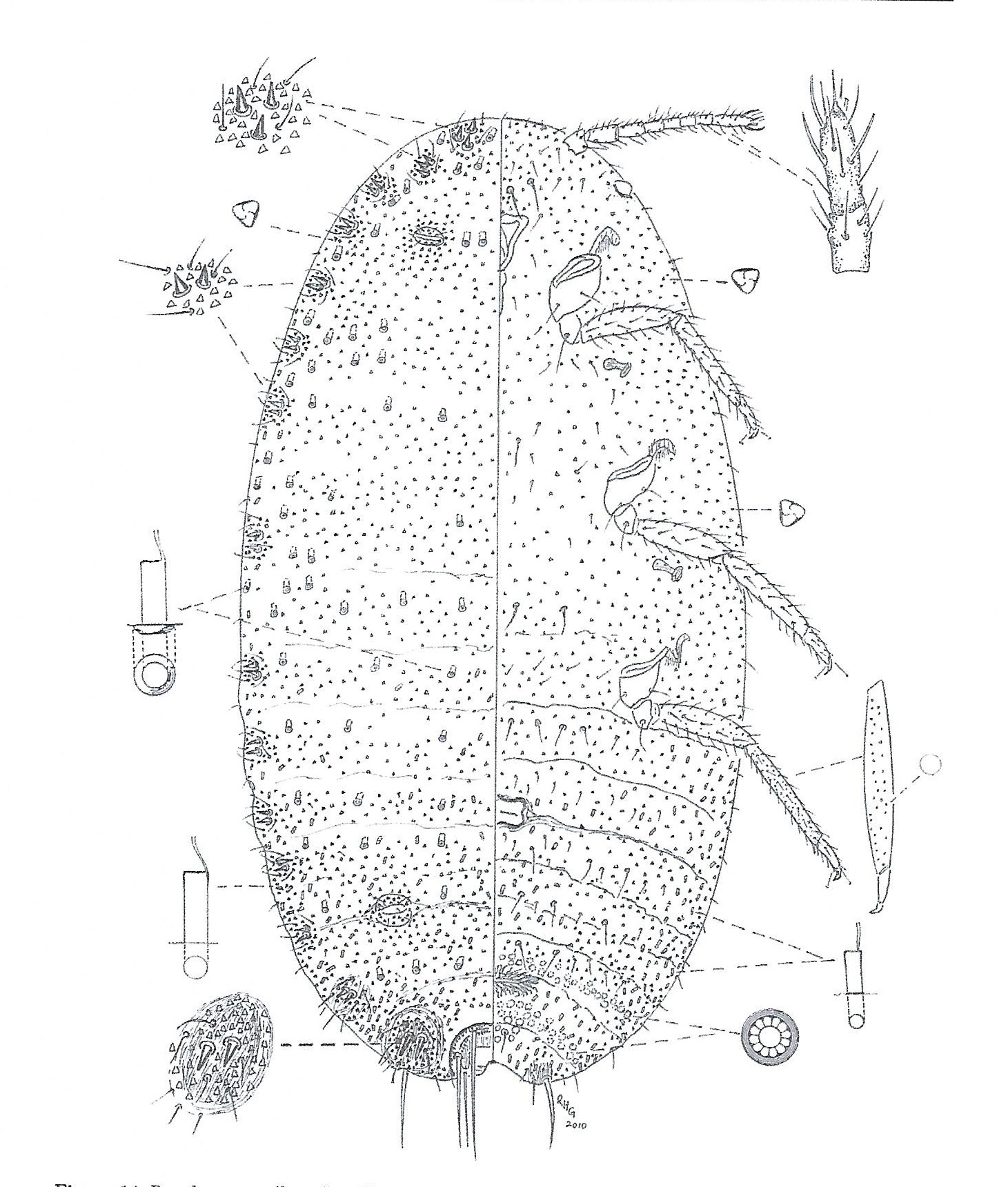Valid Names Results
Pseudococcus cribata González, 2011 (Pseudococcidae: Pseudococcus)Nomenclatural History
- Pseudococcus cribata González 2011: 112-121. Type data: CHILE: Region de O'Higgins, Placilla, on table grapes. Holotype, female, by original designation Type depository: Santiago, Museo Nacional de Historia Natural de Chile, Santiago, Chile ; accepted valid name Illustr.
Common Names
Ecological Associates
Hosts:
Families: 2 | Genera: 2
- Convolvulaceae
- Convolvulus arvensis | Gonzal2011
- Vitaceae
- Vitis vinifera | GranarGo2018
Geographic Distribution
Countries: 1
- Chile
- O'Higgins | Gonzal2011
Keys
- GranarGo2018: pp.10-14 ( Adult (F) ) [Central & South American Pseudococcus]
- VonEllWa2016: pp.74-78 ( Adult (F) ) [Pseudococcus species present in the New World]
Remarks
- Systematics: Important microscopic characters include the lack of C8 and C10, the presence of numerous dorsal oral rim tubular ducts, an oral rim tubular duct between C15 and C16, few or no oral collar tubular ducts along the lateral margin of the thorax and head, translucent pores restricted to the femur and tibia of the third pair of legs, no discoidal pores associated with the eyes. (González, 2011)
- Structure: Pseudococcus cribata is characterized by the presence of depressions on both sides of the dorsal midline from the last abdominal segment to the mesothorax and by having only 15 pairs of marginal filaments due to the absence of the eighth and tenth pairs. The caudal filaments are close to 100% of the length of the body and the penultimate filaments are about 50% of the caudal filaments. The ostiole secretion is reddish orange. (González, 2011)
- General Remarks: Detailed description in Spanish, photographs and illustrations in González, 2011.
Illustrations
Citations
- CorreaGeMa2012: description, distribution, economic importance, molecular data, 1-7
- Gonzal2011: description, distribution, host, illustration, structure, taxonomy, 112-121
- Gonzal2016: biology, diagnosis, distribution, economic importance, illustration, 235, 237, 245, 276-282
- GranarGo2018: diagnosis, distribution, host, key, taxonomy, 9-14, 22
- NavarrBeAc2025: DNA, diagnosis, male, molecular biology, nymph,
- PachecBeBl2014: molecular data, 6
- VonEllWa2016: key, 78



